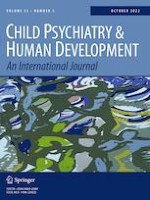09-05-2021 | Original Article
Lifetime Prevalence, Predictors and Comorbidities of Tic Disorders: A Population—Based Survey of Children and Adolescents in Iran
Gepubliceerd in: Child Psychiatry & Human Development | Uitgave 5/2022
Log in om toegang te krijgenAbstract
In this population-based survey, we have evaluated the lifetime prevalence of tic disorders and related sociodemographic factors and comorbidities of them. The data obtained from face-to-face interviews with 29,885 children and adolescents aged 6–18 years. We used the multistage cluster sampling method and a cross-sectional design. Tic disorders and other psychiatric disorders were assessed using the Persian version of the Kiddie Schedule for Affective Disorders and Schizophrenia-Present and Lifetime Version (K-SADS-PL). The lifetime prevalence of tic disorders was 1.5% (95% CI (1.3–1.7%)). The highest prevalence was in the age range of 15–18 years old with 1.9% (95% CI (1.6–2.3%)).57.7% (95% CI 51.8–63.3%) of patients with tic disorders had comorbidity with other psychiatric disorders. Increasing the prevalence of tic disorder with increasing age among Iranian children and adolescents, emphasizes the need to pay more attention to use of pharmacological and non-pharmacological treatments and increase education to families in this regard.
